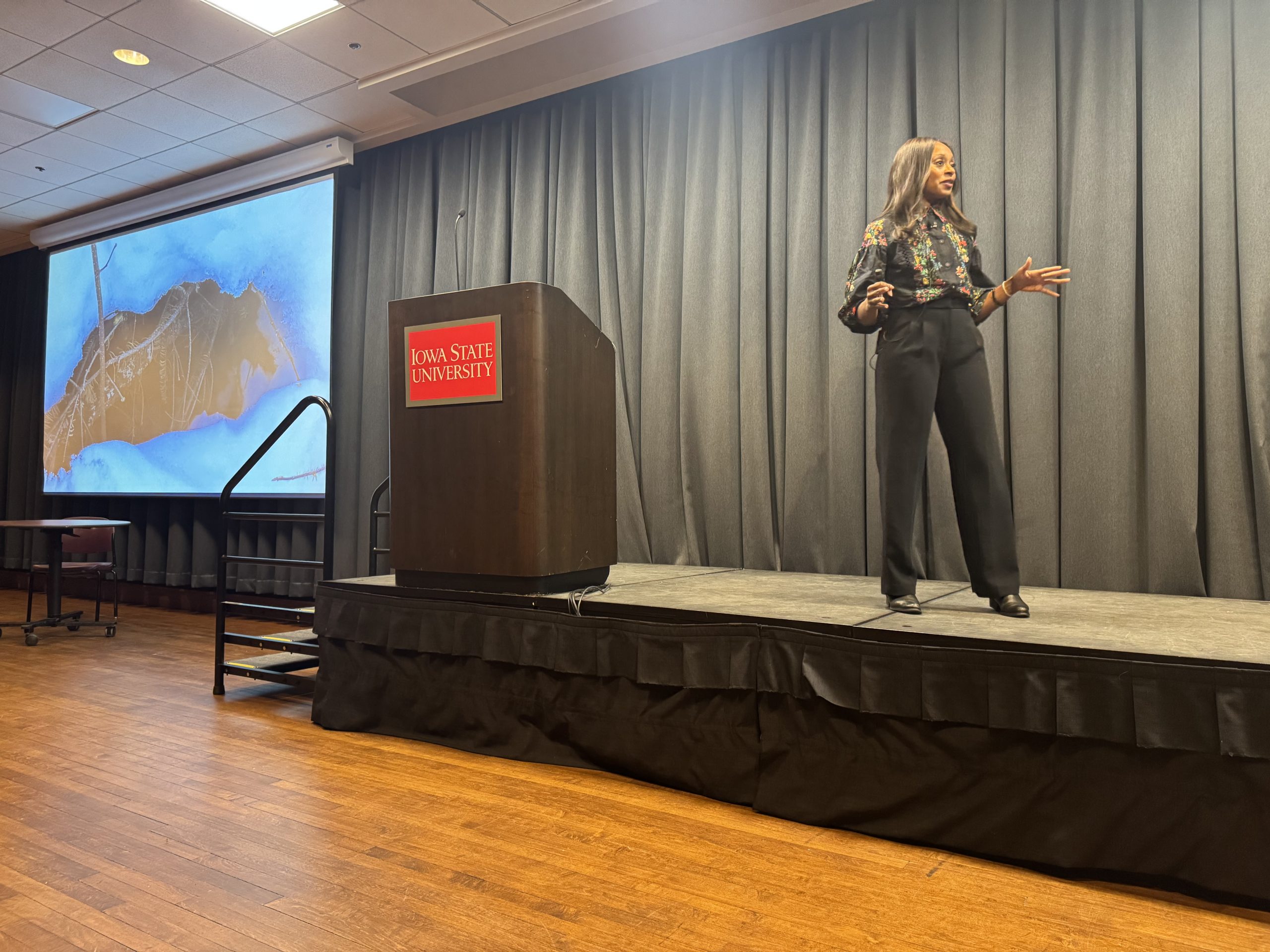Key Takeaways from, “Wild Life: Finding my Purpose in an Untamed World” – Dr. Rae Wynn-Grant
Author: knguyen1

Author: knguyen1

Blog by: Natalia Rodriguez-Felipe, WGS Student Intern
Last week, the Women’s and Gender Studies Program and various other university departments and programs welcomed Dr. Rae Wynn-Grant for two lectures. We wanted to highlight some of the themes and topics she touched on within her lecture!
Dr. Rae Wynn-Grant is a professor at the University of California, Santa Barbara. Wynn-Grant is a carnivore ecologist emphasizing the female species and what it means for the future of ecology, and she focuses her time doing field-based research. She is also the co-host of Mutual of Omaha’s Wild Kingdom.
Dr. Wynn-Grant grew up in Cincinnati, connecting her love of nature through the television and making mudpies in the backyard. Wildlife content inspired her to become an ecologist. As a student pursuing her bachelor’s degree at Emory University, college was a struggle. She still had aspirations to be a nature show host; her advisor told her to pursue a degree in environmental science. This change made her find her passion, but eventually, she began to lose interest before graduation and, at the time, was the only black student in her class and department.
In 2005, while finding her community, she explored study-abroad opportunities in Australia, Canada, and Southern Kenya. She decided to attend the study abroad program in Southern Kenya, living in mud huts for 6 months. While in Kenya, she went on her first hike on her 20th birthday, saw the world’s most iconic animals, and found empowerment through her professors, who were Black Kenyan men.
She did not have electricity or the internet during her study abroad; the only communication method with her friends and family was through written letters. The letters would take one month to send out since she lived in remote Southern Kenya. Her parents sent her a care package with magazines, snacks, and clothes. One magazine was Time Magazine’s September 2005 edition, post-Hurricane Katrina. She saw how it was a highly racialized event, knew there were social justice problems, and had to advocate for her community, learning about the intersections she may face.
While at university, she conducted social science surveys, observing how poverty plays a pivotal role in social justice and community. She had an identity journey in her research, seeing how social justice intersects with ecology, and found her passion for studying East American wildlife, emphasizing bears.
Wynn-Grant pursued a PhD at Columbia University in New York and had to fly out to Sacramento, California, for the ESA convention. She was listening to NPR daily, while on her way to the convention, the news of Michael Brown’s death came up on the radio. Wynn-Grant was horrified at how no one at the convention showed concern for Michael Brown’s murder.
She gave her ESA presentation. In her ESA presentation, she demonstrated the significant mortality risk for black bears. Her presentation did not go well: her advisors were flooding her phone, explaining their disappointment with the presentation. Later on, she was offered a position on National Geographic. That same year, NatGeo admitted to being racist and apologized for showing racist coverage.
“Scientists are all different kinds of people; you need to learn the intersections of scientists.”
She demonstrates allyship and advocacy, mentioning how “there is no such thing as a single issue struggle because we do not live single life issues.” She continued, “We are a combination of the people who have helped us or taught us. We need to look for other ways for wisdom.” -Dr. Rae Wynn-Grant
